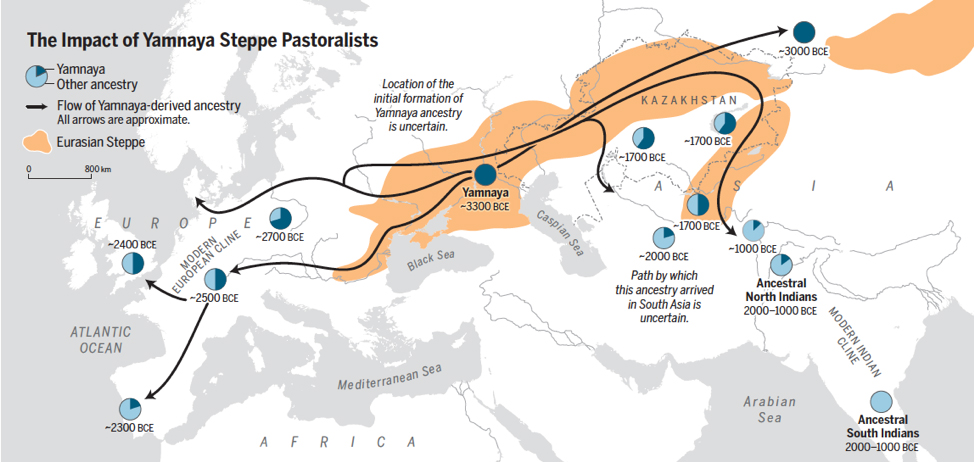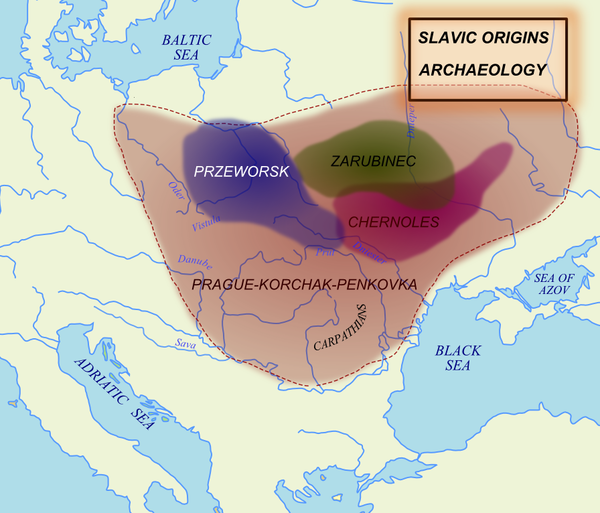You are currently browsing the tag archive for the ‘science’ tag.
Indo-European Languages: Not from Iran, But the Steppe
For years, scholars have debated the origins of Indo-European languages in South Asia. Some theories pointed to an Iranian plateau origin, but new evidence suggests a different story. The study titled The Formation of Human Populations in South and Central Asia provides negative evidence against the Iranian plateau theory and instead supports the idea that these languages spread from the Steppe region. I have been studying the extraordinary affinity between Indo-Iranian, especially between Vedic Sanskrit and Slavic languages which is obvious if you look at the short list of verbs and nouns in my earlier blogs. This is just a fraction of the cognate words included in the Russian- Sanskrit Comparative Dictionary being prepared for publication. The article gives some explanation for this undeniable affinity.
Some researchers think that the Bactria-Margiana Archaeological Complex (BMAC) (Bactria-Margiana Archaeological Complex), an ancient civilization in Central Asia, which was a place in Central Asia, might have been where Indo-European languages began in the Indian subcontinent. They believe this because the BMAC was close to South Asia, and there were connections between the BMAC and the people of the Indus Valley Civilization. Contrary to the previous theories, the new genetic evidence shows that the main group of people of BMAC region didn’t have any notable genetic connection to Steppe pastoralists and that they didn’t play a big part in the ancestry of later South Asians. However, some individuals in the BMAC region started having Steppe pastoralist genes around the year 2000 BCE, which is when it also began appearing in the southern Steppe region.

The largest-ever ancient DNA study illuminates millennia of Central and South Asian population history. (Image source: The Formation of Human Populations in South and Central Asia)
The new study looked at data from ancient people in the Swat Valley in the northernmost part of South Asia, and the researchers found that these Steppe genes moved further south in the first half of the 2nd millennium BCE. They contributed up to 30% of the genes of modern South Asian groups.
The Steppe genes in South Asia are similar to the ones in Bronze Age Eastern Europe. This suggests that there was a group of people who moved between these regions, and this movement may have played a role in shaping the similarities between Indo-Iranian and Slavic languages.

Early Slavic artefacts are most often linked to the Zarubintsy, Przeworsk and Chernyakhov cultures embrace the Western part of the Steppe.
This is a rough adaptation of the earlier maps showing the locations of Early Slaves (green) and BMAC (purple).

The researchers analysed ancient DNA and found that Central Steppe ancestry made its way into South Asia during the first half of the 2nd millennium BCE. This genetic evidence strengthens the connection between the Steppe and Indo-European languages in South Asia. It’s a bit like fitting pieces of a puzzle together, as genetic data supports the idea of language migration from one region to another.
Material Culture Differences and Genetic Links
What’s even more intriguing is the disparity in material culture between the Steppe and South Asia during the Bronze Age. Despite significant differences in artefacts and technologies, genetic evidence suggests the spread of Steppe-related genes into South Asia. This phenomenon is somewhat akin to the Beaker Complex in Europe, where people with Steppe ancestry made significant demographic impacts while adopting local material culture.
However, there’s another interesting clue: the people who have been responsible for preserving ancient Sanskrit texts, like Brahmins, have more genes from the Steppe region than what we would expect based on a simple mix of different South Asian genes. This is another piece of evidence that suggests that the Indo-European languages in South Asia might have come from the Steppe region before the year 2000 BCE.
